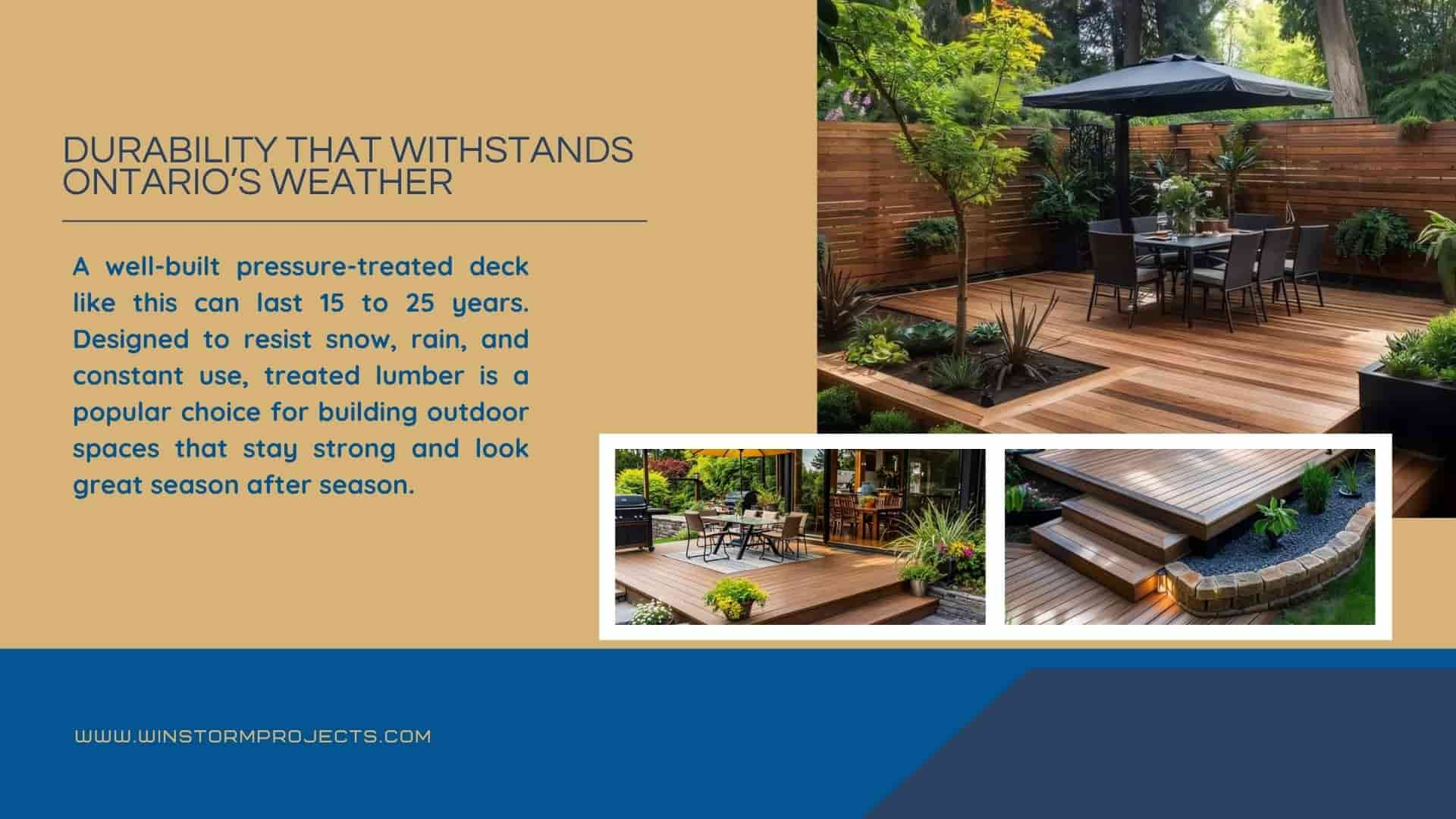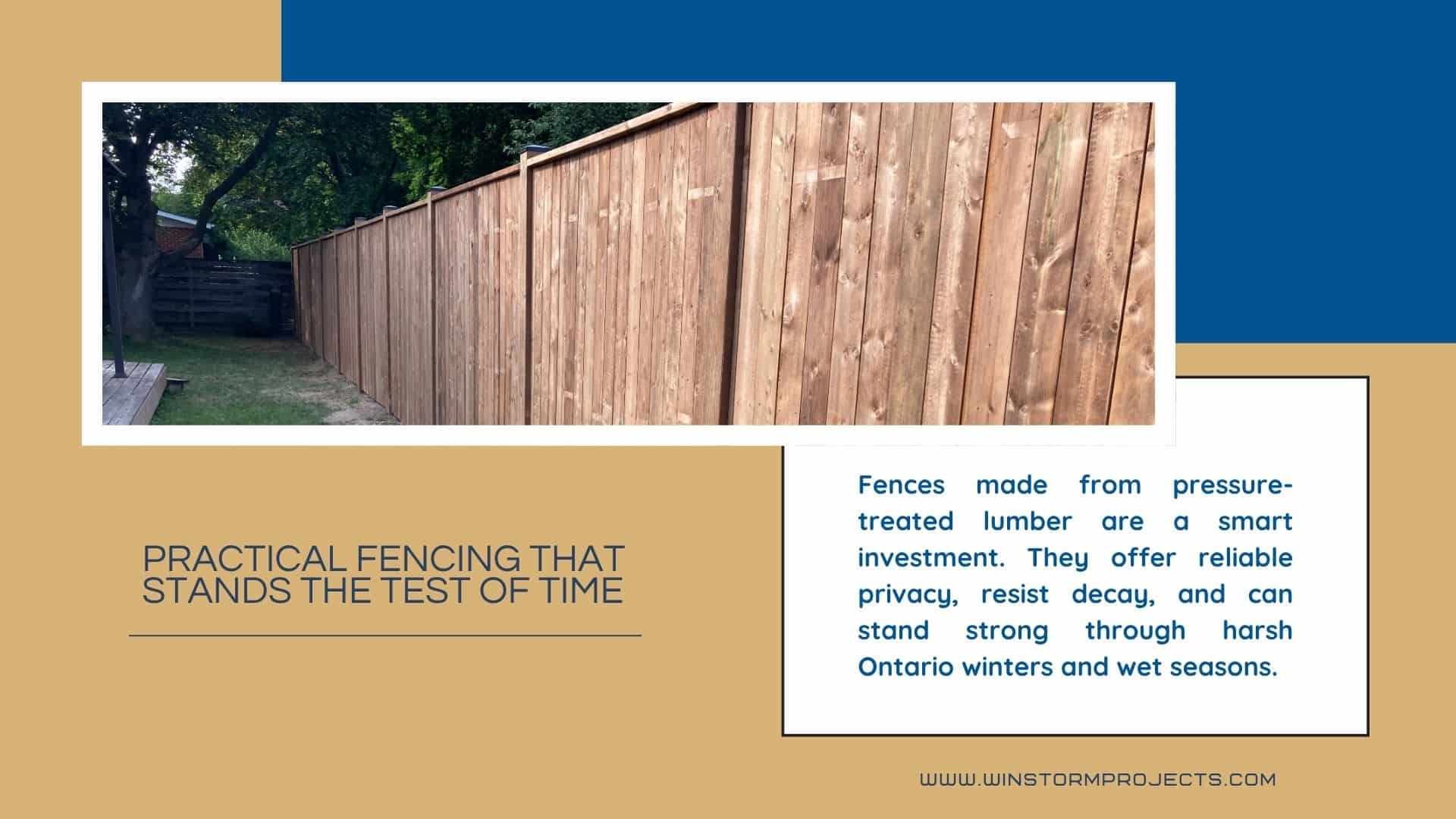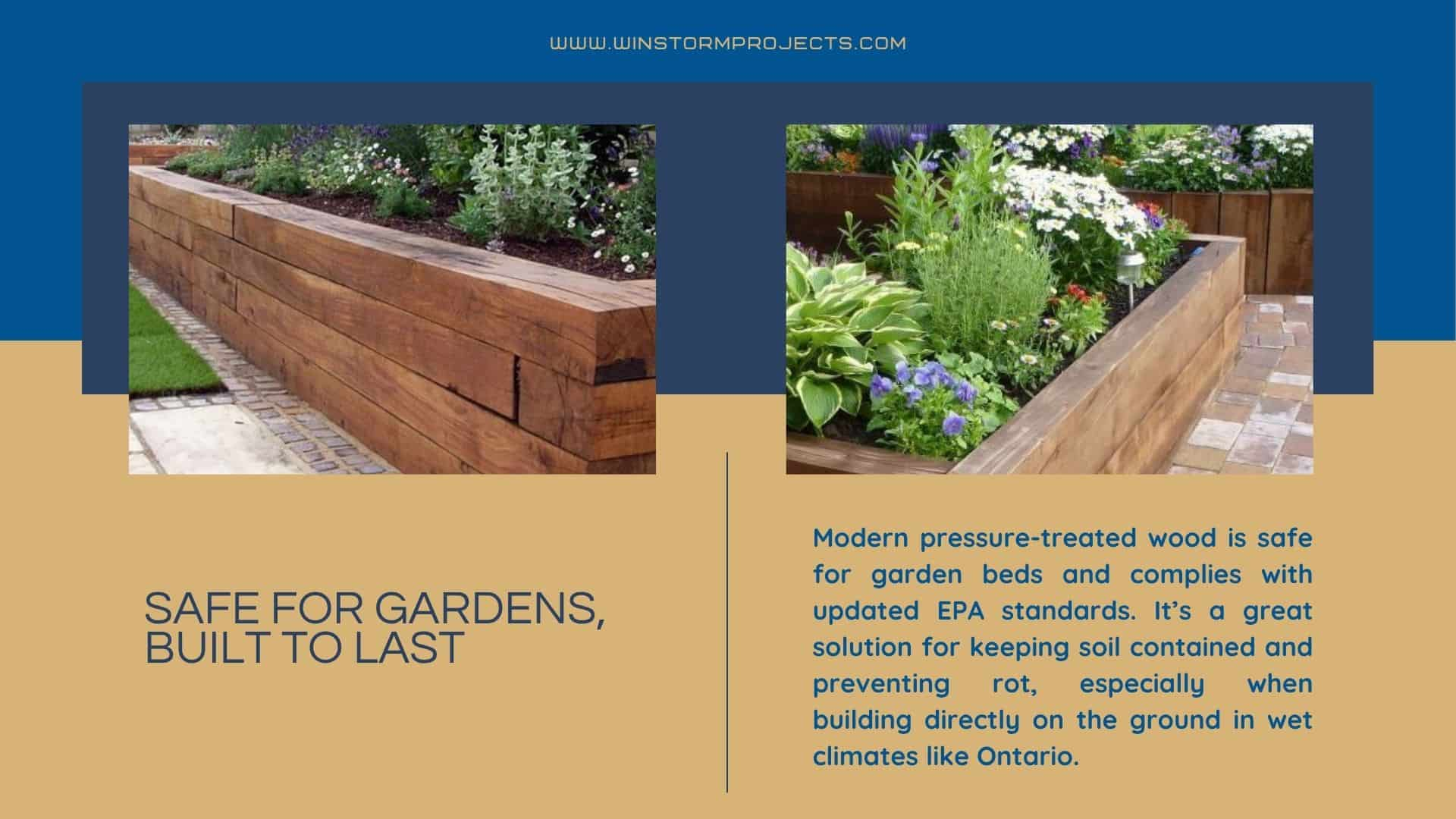When you’re planning an outdoor project in Ontario, be it a deck, garden bed, or fence, choosing the right materials is key. Pressure treated wood is a popular choice because it’s built to handle tough weather, resists rot and pests, and won’t break the bank. Compared to untreated lumber, pressure-treated wood offers serious advantages for homeowners looking to build something that lasts.
In this article, we’ll break down what pressure-treated lumber is, why it works so well for outdoor projects, and how to get the most out of it.
What Is Pressure Treated Wood?
Pressure-treated wood, often called treated lumber, is regular wood that has been infused with preservatives under high pressure. This process protects the wood from decay, moisture, and insect damage, problems that untreated lumber can’t withstand over time.
How It’s Made
The wood is placed in a large tank where preservatives like ACQ (alkaline copper quaternary) or copper azole are pushed deep into the wood fibers. This helps the wood stand up to moisture, rot, and insects, common problems in Ontario’s climate, especially in outdoor applications like decks or fencing.
Why Choose Pressure Treated Lumber?

1. Built to Last Outdoors
Pressure treated wood is a great choice for outdoor structures. It’s commonly used in decks, fences, garden beds, retaining walls, and outdoor furniture. Thanks to its protective treatment, it can handle rain, snow, freeze-thaw cycles, and the wear-and-tear of everyday use.
2. Cost-Effective for the Long Run
While the upfront cost of pressure-treated lumber might be slightly higher than that of untreated wood, it often lasts 15–25+ years with proper care. That longevity means fewer repairs, fewer replacements, and long-term savings.
3. Protects Against Rot and Insects
The chemical preservatives used to treat the wood help protect it from termites, carpenter ants, and fungal decay. That makes pressure-treated lumber a smart choice for areas where the wood is in contact with soil or moisture, like garden beds or ground-level decks.
Where Treated Wood Works Best

Decking and Outdoor Furniture
If you’re building a new deck or refurbishing outdoor seating, pressure-treated wood is one of the most popular choices. It holds up against foot traffic, sun, and moisture, plus, it’s easy to stain or seal to match your outdoor style.
Fencing and Landscaping
Treated lumber is also a solid option for fencing. It provides privacy and durability, especially when used in areas with changing seasons or heavy moisture. For landscaping, it works well in garden beds or as edging material because it won’t rot when it gets wet.
How Long Does Pressure Treated Wood Last?
On average, pressure-treated lumber can last 10–25 years or more, sometimes even longer, depending on how it’s used and maintained.
Here are some factors that affect its longevity:
- Soil contact: Keeping wood out of direct contact with soil will prevent moisture buildup and rot.
- Drainage: Good water drainage around the structure helps avoid pooling and saturation.
- Sealing: Using a quality pressure-treated wood sealer every few years helps protect the surface from water and UV damage.
- Weather exposure: The more protection from snow, rain, and sun, the longer your treated wood will last.
Is Pressure Treated Wood Safe?

Yes, pressure-treated wood is safe for outdoor residential use, including for garden beds and play areas. Modern treated wood products meet updated EPA standards and no longer use older, more hazardous chemicals like CCA (chromated copper arsenate).
Still, it’s smart to wear gloves and a mask when cutting pressure-treated wood and avoid burning it.
Environmental Considerations
What About the Chemicals?
Today’s preservatives are designed to be safer for people and the environment. They’re infused under high pressure and bond tightly to the wood fibers, so there’s minimal leaching or risk during everyday use.
Sustainability Matters
Treated wood’s long lifespan actually reduces the need for frequent replacements, meaning fewer trees are harvested over time. Choosing pressure-treated wood from suppliers who source lumber responsibly also helps support forest sustainability.
Conclusion: A Smart, Practical Choice for Outdoor Living
Pressure-treated wood is one of the best choices for outdoor projects in Ontario, from decks to fences and garden beds. Built to resist rot, pests, and weather, it gives you long-lasting value in every build. With proper care, your structures will stay strong for years.
Ready to start your project? Choose for durability and peace of mind.
Frequently Asked Questions
What is pressure-treated wood?
It’s lumber treated with chemical preservatives under pressure to resist moisture, insects, and decay, ideal for outdoor structures like decks and fences.
Is it safe for garden beds?
Yes. Modern pressure-treated wood is EPA-approved and safe for residential gardening when handled and used properly.
How long will pressure-treated wood last?
Anywhere from 10 to 25 years, depending on care, exposure, and use. Sealing and limiting soil contact will extend its life.
What are the main benefits of pressure-treated lumber?
Its durability, rot resistance, and cost-efficiency make it a go-to material for decks, fencing, and landscaping.
Is pressure-treated wood environmentally friendly?
When sourced from responsibly managed forests and properly maintained, it’s a sustainable option due to its long lifespan and reduced need for replacements.

